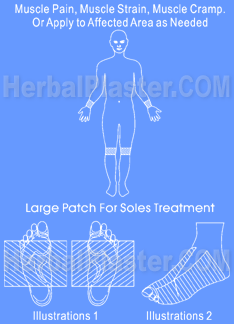|
|
Cause Of Muscle Pain
|
|
|
|
A muscle is able to perform work by using nutrients introduced by the bloodstream, the key element of which is an oxygen rich environment. A
heavily worked muscle, glucose is being acted upon by pyruvic acid to release energy, oxygen is being pumped in to allow this to take place,
the bloodstream removing waste products, the main one being lactic acid. Problems start when the oxygen supply is reduced, usually during
the compacted part of the muscle cycle, (a muscle has an oxygen reserve of about six seconds). Then, in the oxygen depleted environment, the
pyruvic acid turns into lactic acid, which no longer can be removed due to the restricted blood flow. The muscle starts to ache, which is a
low-level pain, and is the body's early warning system.
Hopefully, rest and recuperation will allow the problem to be solved, but somehow the muscle unable to recover there is a further build up of
lactic acid, resulting in extreme pain in the form of cramps. There will be an occasion where lactic acid can be locked into the muscle. Lactic
acid impacts on the blood flow and the nervous system within the muscle. The 'pinched' nerves give a weakened signal that is interpreted by
the brain as an over-relaxed muscle. The 'tighten-up' signal then further cramps the muscle, producing more lactic acid, and locking the muscle
into spasm.
However parts of the body do not act in isolation and this muscle may have passing through it a blood supply to, or, from other muscles, as
well as nerve paths to those muscles. These in turn will start to suffer and become tied into the original source. This is known as referred pain.
We then have sore muscles distorting the skeletal system, resulting in poor posture, related aches and pains, a lowering of the person's spirits
and a depleted immune system. The means of restoring muscular function varies from, surgery, medicine in several forms, manipulation, or
painkillers. The intention of any therapy is to induce healing, or more correctly self-healing.
|
|
|
|
|


